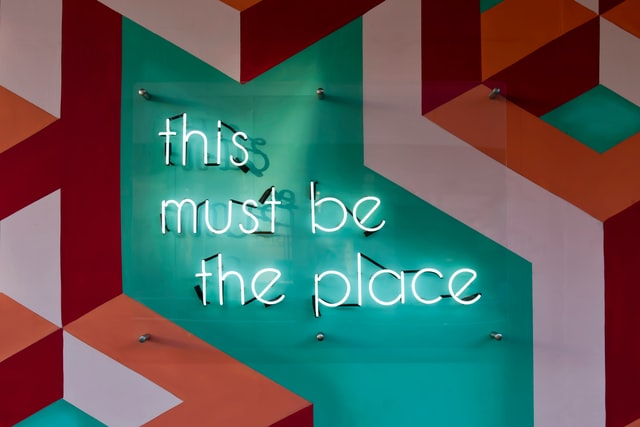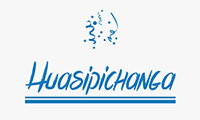Series 3 - Webinar 2
2020: A Year without Public Space under the COVID-19 Pandemic
Innovative Approaches and Creative Practices in Response to the COVID-19 Pandemic
Thursday 9 July 2020 / Series 3 (July) - Webinar 2
>>> Speakers and agenda
>>> Programme of our COVID-19 initiative
The webinar was initiated and hosted by Luisa Bravo (City Space Architecture / The Journal of Public Space) and Hendrik Tieben (Chinese University of Hong Kong), part of the series “2020: A Year without Public Space under the COVID19 Pandemic”. In this second webinar of the series, artists, practitioners, and scholars from the UK, US, Australia, Ecuador, Italy, and the Netherlands shared their creative experiences and approaches in response to COVID-19 and discussed the role of art and everyday creativity in difficult times like the current crisis.
Credits
Recorded video of the webinar produced by Yin-Fen Chen, The Chinese University of Hong Kong
Summary of the webinar curated by Stephanie Cheung, The Chinese University of Hong Kong
Insight from speakers
Martin Zebracki, School of Geography, University of Leeds, United Kingdom
Martin viewed queer activism as a creative tool both in concept and practice to combat COVID-19 and facilitate creative responses, highlighting the importance of moving beyond sexual identity and achieving an intersectional perspective and solidary, including social markers such as inter-sex gender, age, ethnicity, religion, geographical origin. Art can be seen as ‘politics of activism’ (Kester, 1998) and politics as a tool to make visible what had been excluded, raising also the question of spatial politics regarding query.
Martin shared a few observations of queer artivism under COVID-19 and the rise of digitally mediated spaces. With the cancellations of offline pride events, a digital safe space of intimacy was refined for the otherwise marginalized. Underpinning such process is co-creation across borders and time zones through creative acts and public art as a grassroot movement, triggering hopes for social justice and inclusivity. Contestation is now possible through self-created safe spaces. Martin also raised the question of commemoration, regarding whose lives are commemorated and represented. With the global pride event that just took place in June, intersectional solidarity was again highlighted, but at the same time raised the question of performative solidarity, doubting whether there were actual policy changes addressing the reality of marginalized communities, as seen also in the Black Lives Matter movement. Martin concluded with the revaluation of public art, where there is a clear move beyond institutional spaces, promoting do-it-yourself approaches, blurring the line between professional and amateurs. Yet, there are also issues like competition of representation and the reinforced digital divide. Lastly, Martin raised the question of the role of the institution in post-COVID-19 world where grassroot is more connected digitally.
Susan Moffat, Global Urban Humanities Initiative, University of California Berkeley, United States
“What this space of the Albany Bulb shows is that when a public space is less managed, when it’s rough, when it’s a place where nature and the urban edge intersect, and when people are able to create their own spaces, it provides a space for conversation, for dialogue, for debate, as well as a place of solace and rest.”
Susan presented the case of The Albany Bulb, a uniquely resilient public space at times of pandemic and protests. It was a landfill that operated during 1963-83, taking up 30 acres at the edge of San Francisco Bay. The exposed rubble remains and this has become a creative space where art and nature come together, artworks are made from found materials at the landfill. This has also been a contested space, and had been home to the otherwise homeless community, until 2014. This space is dense with memories, covered with shrines and memorials, and always changing. Dynamism, anonymity, DIY are at the heart of Albany Bulb, with amenities built by users as the authorities had no intention to manage the space for years. In fear of stricter control from the authorities after the eviction of the homeless, Susan founded Love the Bulb, demonstrating the value of loose space via participatory art projects, festivals, performances, theatres, gatherings, and encouraging the continuation of the creation of uncurated guerrilla art and to nurture the existing character. Susan also shared the “Altered territory” exhibition, which was turned online due to the pandemic.
The Albany Bulb has become an important safe space during the lockdown, with participatory art still going on, such as leaving supportive messages for each other. The uprising of the recent protests transformed the uses of public spaces, and continued the nature of political art of The Albany Bulb. Susan and other artists created memorials for victims of police violence, triggering people’s own responses at this unexpected public space, with interesting encounters such as parents trying to explain to kids and people leaving stones at the memorials.
Luke Hespanhol, School of Architecture, Design and Planning, University of Sydney, Australia
Luke’s interest lies in digital placemaking, utilizing digital technology to transform public spaces and create news experiences and places for social interaction. Luke shared the experimental public space he set up at campus for digital placemaking research and teaching with media facade, lighting installations, interactive games, turning the otherwise rundown and unsafe space into a happening gathering place. The whole point of that space evaporated due to the pandemic as there was no audience. Luke thus utilized the space to post public health messages, intermingled with a digital heart, and has been playing every night since mid-March.
Contrastingly, the meaning of the space and artwork did not disappear in high-density places like Brazil where there’s an emergence of urban projections from apartments projecting messages of diverse topics, such as political requests, or storytelling projects showing animated drawings of children and human stories. Luke also joined the Festival Arte Conecta in Sao Paulo and Rio de Jeneira to project similar messages he did in Sydney.
As part of the movement, Luke also observed a lot of stencilling on streets, using the city as canvas and creating triangulation throughout the city. With lighting and electronics works, Luke created a zoom-based online studio exhibition this year due to the pandemics. Students could showcase their works across the globe, and interestingly, real-time social interactions were made possible and articulated through this online digital medium. In conclusion, Luke considered citizen expression and interaction design as two main impacts of the pandemic. Citizens responded by articulating messages throughout the city canvas and maintaining hybrid social interactions in mixed reality and virtual public spaces.
Giulia Gualtieri and Viviana Cordero, Huasipichanga, Ecuador / The Netherlands
Giulia and Viviana focused on working with children in participatory urban practices in the field of public space. During the lockdown and the pandemic, the focus and the challenge became reaching out to children, who desperately needed public space. The first move was to collaborate with other organisations to publish booklets on mental health, public space, lockdown, pandemic, addressing the issues from children’s perspectives. Huasipichanga helped with translation and dissemination. In the booklets, children became explorers of their own house, incorporating strong education values, moments of reflections, and fun activities for parents and kids. Via social media campaigns, the organisation was also able to collect valuable data. For instance, the activity of building your own den reflected the phenomenon where most children do not have their private rooms, reinforcing UNICEF’s observation that “more than one out of every three children in the developing world does not live in adequate housing.”
Huasipichanga also tried to recreate the public space environment on zoom, creating the possibility to meet other children in other countries online, and for them to learn that there are many other kids experiencing the same situation. Such attempts also allowed parents to understand their children’s needs better and learnt better ways to address difficult issues.
Floor van Ditzhuyzen and Bas Sala, We Love Public Space Festival, The Netherlands
The 4th edition of the We Love Public Space Festival will take place on 25 September, the goal of the festivall is to draw professionals in art, design, architecture, municipality together and talk about public space. With no budget and production team, Bas explained 10 rules of organisation, including the nature of festival not conference, use of different locations, no permits and entrance fee, no reservations, yearly theme, simple simultaneous programme, use of international video conferences, and artists should be paid. Bas also shared images of previous festivals and gave us a taste of the diverse programmes.
Floor explained how COVID-19 affected the festival this year, shaping the theme to be “public space in limbo/ flux”, to pay tribute to the resilience of public space and respond to changes caused by the pandemic, such as social distancing, urban etiquettes, nature of public space. Before creating solutions, it’s important to observe and interpret, Floor is calling for observations worldwide via open call. For instance, the closure of parks which are supposed to be the lungs of the city, is an ironic example as the limit in fresh air is one of the causes of the pandemic. Another example is the viral social circle strategy and its nature, or the temporary set-up of dining areas in public spaces using local materials. Floor also introduced the initiative Publieke Werken Rotterdam, an open call to design posters which took the place of billboards for cultural events that were all cancelled due to COVID, with an online opening. Lasly, another contributor of the festival is tape_measuers, where a Singaporean artist documents amateur measurements during the pandemic.
Linda Di Pietro, Indisciplinarte, Italy / affiliated to IN SITU - European Platform for Artistic Creation in Public Space
Linda introduced IN SITU, a network of diverse European artists who responded very differently to the global and local pandemic situations. Created in 2003, in addition to artistic projects, IN SITU has now moved into the creation of Think Tank and MOOC (Massive Open Online Course) in the field of artistic creation in public space. Facing the pandemic, some projects still took place in public space, some moved to digital space, and there was also a birth of new projects to respond to current situations. A few common questions heavily discussed in the network were the idea of going back to normal, to mend and connect the social and physical body, the need to be aware of the misuse of the pandemics by the power, rethinking mobility, and the questioning of digital space.
Linda also shared some ongoing IN SITU projects. Joanne Leighton’s Les Veilleurs – The Vigil in Graz is taking place until the end of year, this is a piece which allows a person to look over the city every 12 hours, with the implication of taking care of the city and involving a total of over 700 residents. Lotte van den Berg works on digitizing conversations, creating authentic and honest moments. Radio seems to have replaced public space works over the past months, becoming a new way of communication, including projects like Radio Local. Linda recognized the need to create a new way of European networking, serving as a safety net to share ideas online with a broader audience.
Roundtable discussions
Reclaiming Public Space as a Space for Democracy, Freedom of Expression and Civil Rights
Martin highlighted how COVID-19 has reconfigured the relationship between structure and agency and the control over both digital and physical space in face of authorities, echoing Floor’s example of shutting the ‘lung of the city’. Particularly, Martin raised the question of how can minorities deal with the situation, especially those who are disproportionately impacted by COVID and those who also face restrictions on digital space. Floor stressed on the freedom of expression, and shared the viewpoint of how the Black Lives Matter movement had been able to grow into a mass movement at times of pandemic as people were also reclaiming the right to the streets and public space, which was made possible at COVID. Transformation and ownership of public spaces also shifted due to the open attitude of municipalities.
Viviana shared the challenge to communicate the message across different stakeholders, agreeing that applying art and creativity are great ways to tackle that and how she has learnt simpler ways of communicating with the children she worked with. Martin recognized the value of tactile engagement, but questioned the possible extent of negotiation of the use of technology in this current backdrop of academics trying to move classes online. Susan thus suggested the use of hybrid methods, combining the online and offline, indoors and outdoors, rethinking how classes could be run. However, we should take note of the equity and access to this hybrid structure, including the structure of time and space.
Luke felt that the situation had made connection easier, engendering the explosion of online venues and the fragmentations of public space, yet at the same time highlighted the uniqueness and values of face-to-face human interactions that were overlooked. This should lead to a reflection and the restructuring and reorganisation of our time and space in the future.
Responding to Luisa’s provocation of Venice Biennale’s theme of living together, Linda challenged us to think ahead and ask ourselves how deep we want to live together in 20 years’ time in order to minimize uncertainties, given that the greater issues are actually climate changes, economic collapse, inequality and more.
Bas reminded all that this should also be a discussion in relation to nature and to reconsider our way of living forward with the natural surrounding, giving the example of how Amsterdam canal’s water quality has improved and attracted more species. Viviana agreed and stressed that if we are not talking about sustainability, we cannot talk about democracy as democracy is also an idea for our future generations who are suffering from climate change. Viviana shared that in Ecuador, citizens have enjoyed the right to nature since 2008, and are entitled to sue whoever harming nature.
During lockdowns across the world, the local state strengthened some regulations to protect health while at the same time loosening others, as lockdowns ease, should the de-regulation of public spaces continue to foster/ sustain the everyday creativity that we witnessed or will the state seek to return to heavily regulated and surveyed space immediately?
Martin thought that there would be an increase in anticipatory power and we would plan for the unplanned, and learn to embrace the unplanned at all levels. Floor felt that it’s also essential to highlight the positive effects brought by the crisis. Susan suggested that the pandemic also affected the already fragmented governance of urban spaces across jurisdiction, using the Bay Area as an example of how city, regional and state parks affected each other in terms of regulations, and stressing the unpredictability of governance and control. On the other hand, Viviana shared how the state took placemaking into account for the first time during the pandemic, realizing that this is a quicker, lighter, cheaper approach especially during a crisis, and creating a new interplay of top-down and bottom-up approaches. Giulia observed a mental lockdown for creative practices, but agreed with Viviana that it’s at these difficult times that the best artistic practices would occur, and that creativity would be boosted in the end.
Further readings
Busy Being Black is a growing compendium of queer Black voices, an oral history project and conversations with those who have learned – and are learning – to thrive at the intersections of their identities.
Love the Bulb is a community-based non-profit organization devoted to protecting the spirit and stories of this unique pile of rubble - Albany Bulb.

Photo by Tim Mossholder on Unsplash



